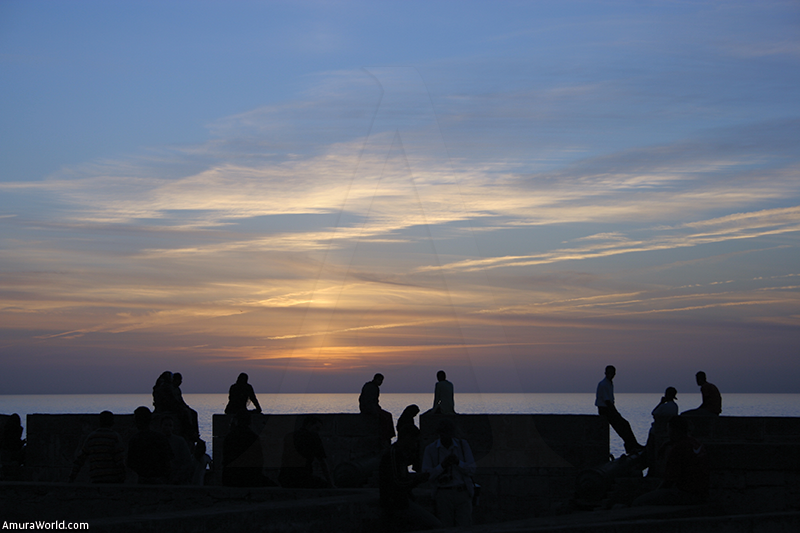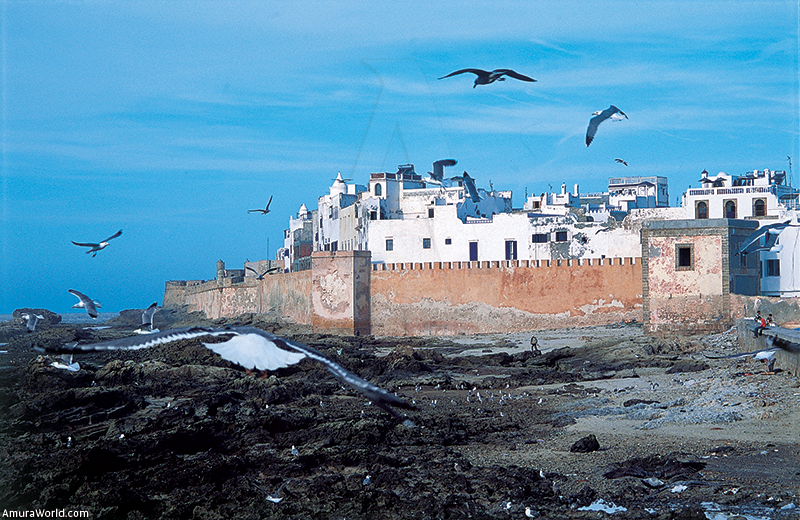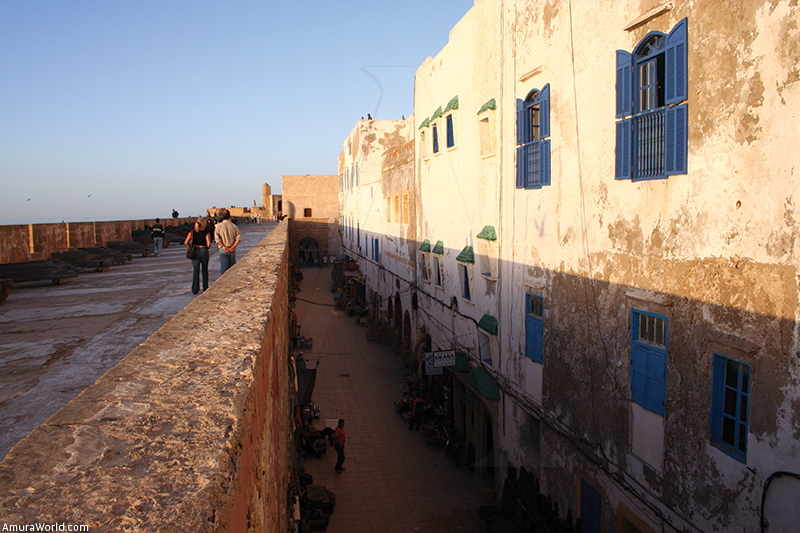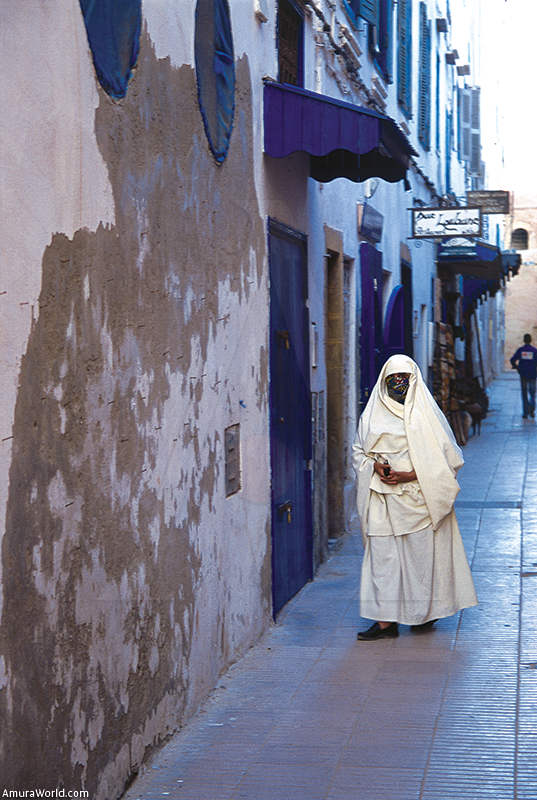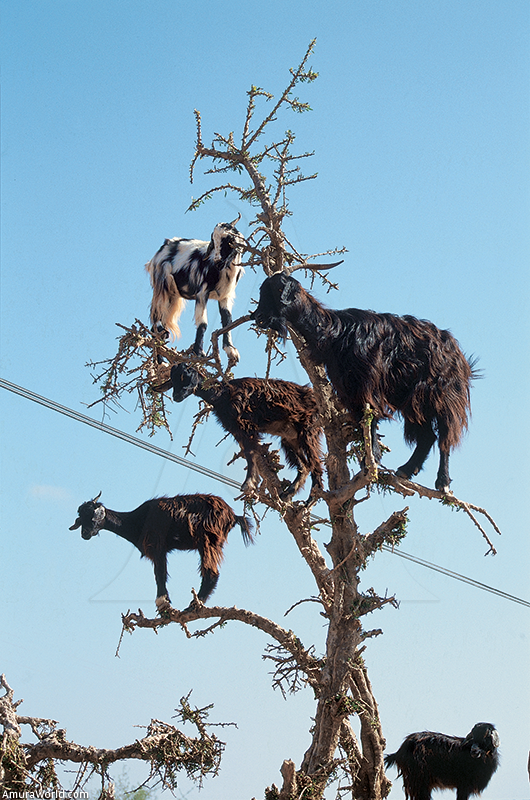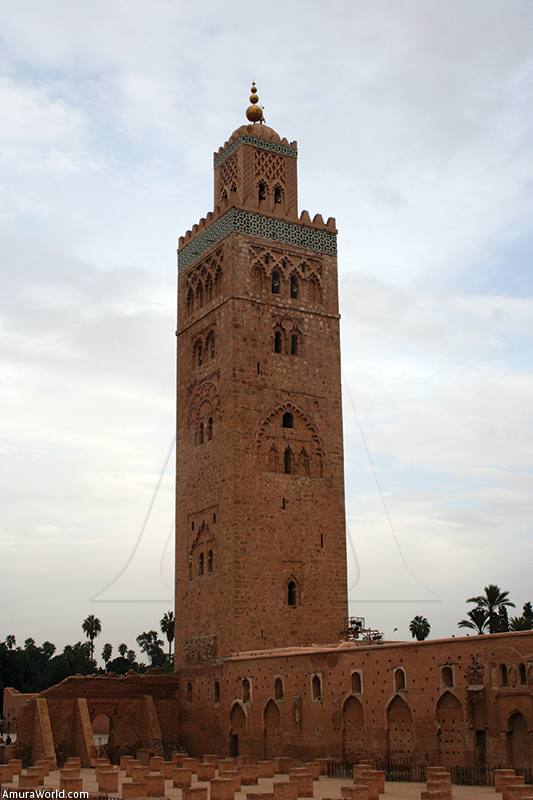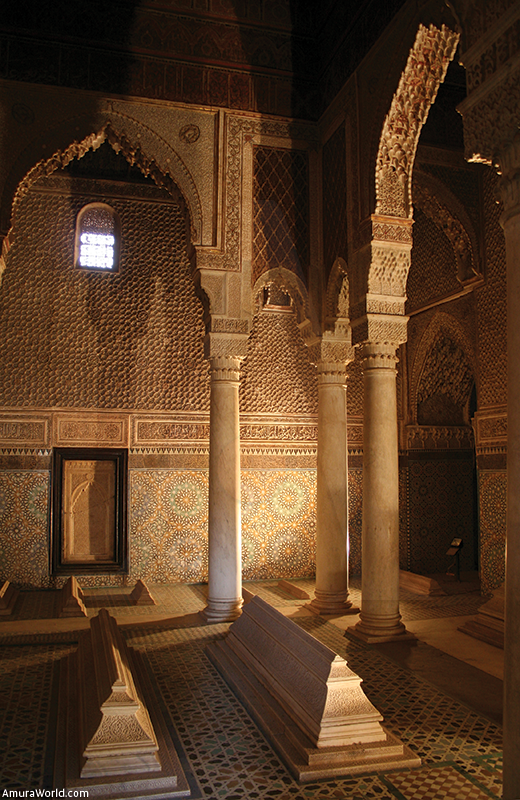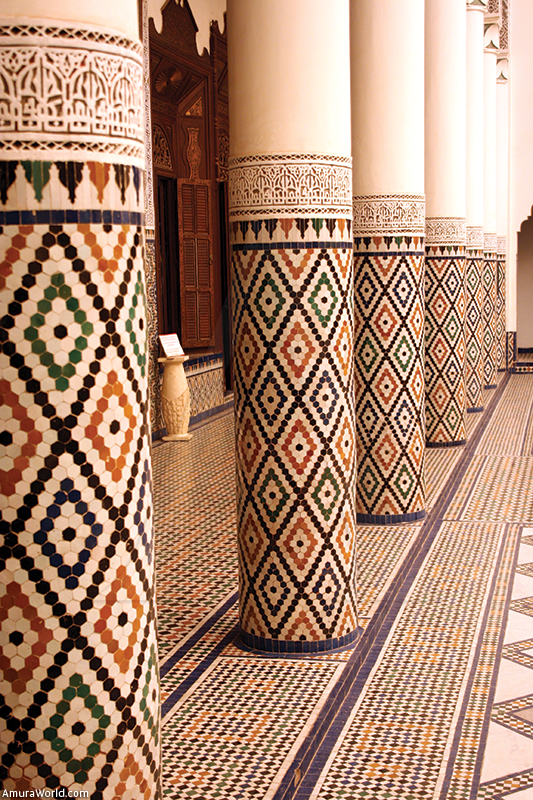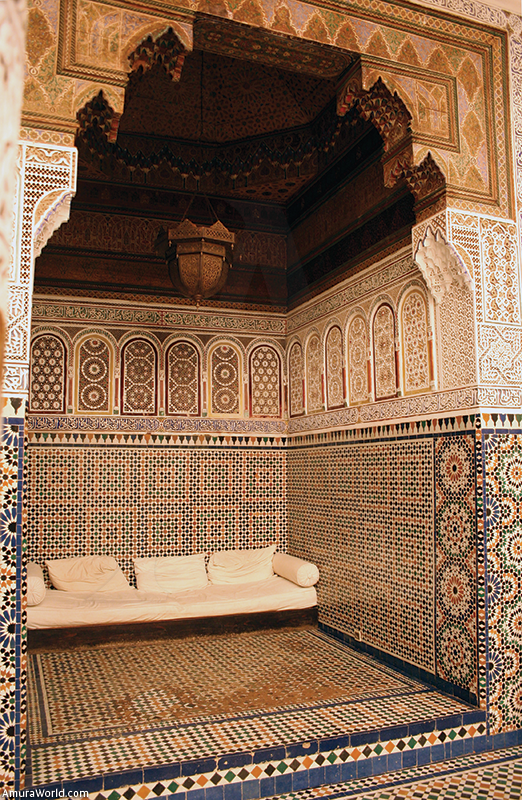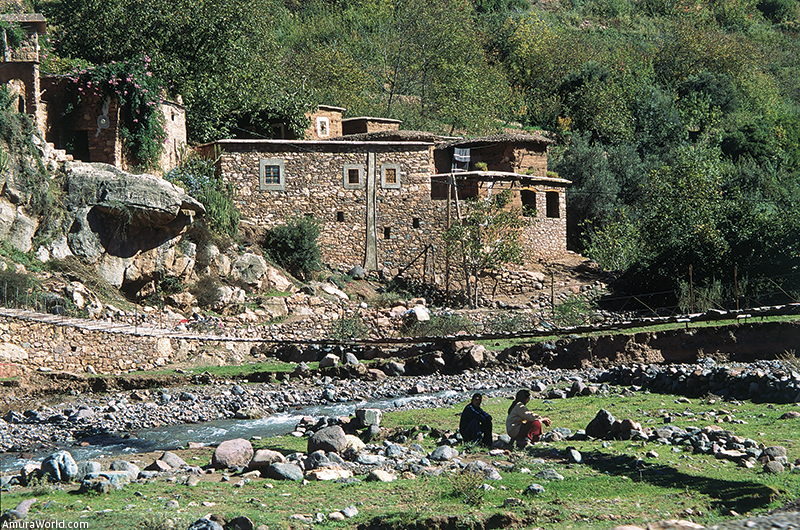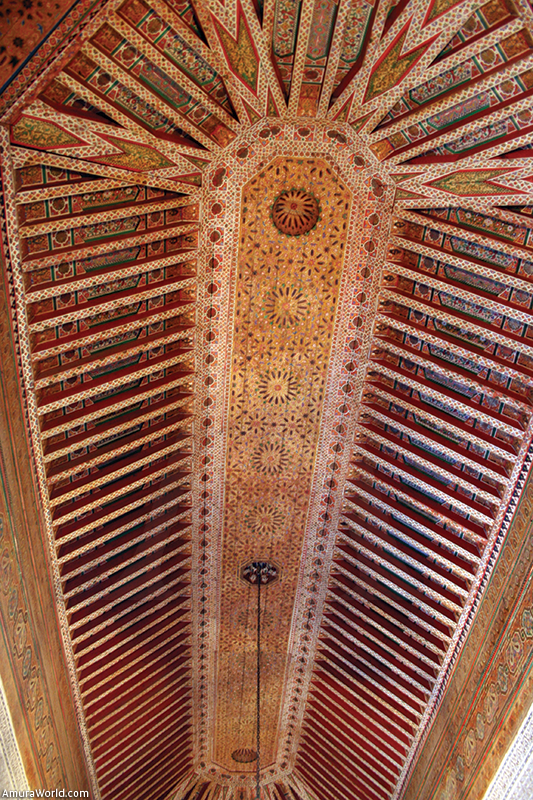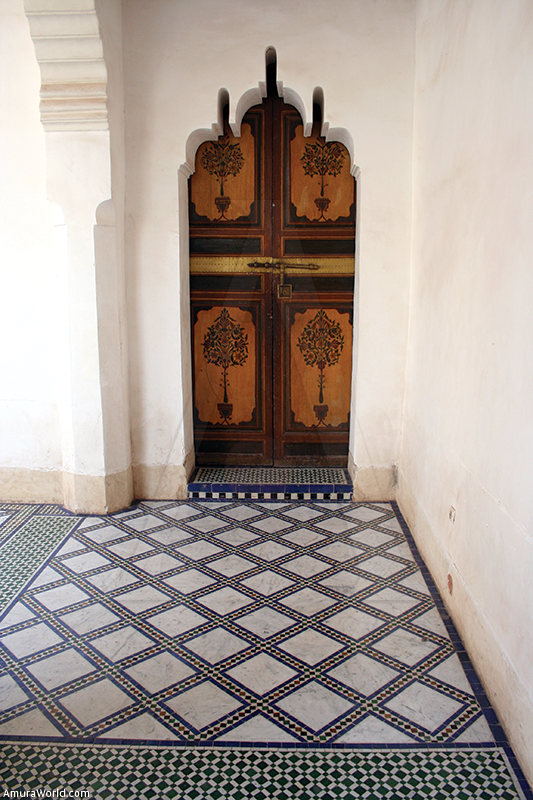Essaouira-Marrakech
The sun attracts Europeans, especially if it is accompanied by exoticism and mystery. Near the Old World there are new destinations that offer an intriguing world.
Nowadays, it is not enough to have a house in the outskirts of Paris, in the German countryside, in the mountain range near Madrid or on the Cote d’Azur. Now people have their own riad (a typical Moroccan house with a central patio and garden) in Marrakech or Essaouira, which has good climate year ‘round and is a great place for discovering the cuisine, customs and the art of living in Morocco. These are the new destinations of the European jet set, places where celebrities meet and where western parties make the medieval, conservative heart of the Medina beat.
Sailing along the length of the coast from Casablanca we passed the charming ports of Azemour, El Jadida and Safi, each with its remnants, walls and the beautiful Portuguese cistern in El Jadida. Passing Cape Beddouza is where an area of strong winds begins. Here, the waves of the Atlantic come to die in the long beaches popular with surfers. Then Essaouira appears, the ancient Mogador, the white city protected by its wall lashed by the waves, guarded by the impressive rocks, permanently attacked by the seagulls that squabble over the pieces of fish tossed overboard by the fishermen. It is one of the important ports of the Moroccan coast and it is packed with boats and a good shelter for our ship.
When stepping on land, the mood becomes intriguing, extreme and mysterious. The port stuns with the cries of fishermen returning after a day’s work and people buying the best fish. Some clean the products of the coastal fishing, such as octopus and other small fish, threatened by the seagulls that wait for their part and the restaurants-stalls offer a menu of grilled fish and other seafood, the finest and freshest of the coast, that are part of the attractive aroma of the entrance of the port guarded by the Berber-Portuguese style towers that protect the great bay, where there is a long beach with calm waters.
Leaving behind the hustle and bustle of one of the most genuine ports of the coast, we discovered the pleasure of exploring this walled city with its narrow streets, white walls, blue doors and windows, aroma of tuya (white cedar) wood that escapes from the pharmacies and the spices sold in the market. The main plaza vibrates with its terraces, where tourists and Moroccans sit together and enjoy mint tea with exquisite cakes made with almonds and honey. The coming and going of people is a never ending show, the air is saturated with the moisture of the sea and the seagulls keep an eye on those they think will offer them some food. There are streets that pass beneath the houses, the shops offer Berber jewels, rugs, djelabas, or doors, but the most attractive are the objects made of tuya wood, which are known for their amber color and black spots. The marvelous artisans of Essaouira create stunning small boxes, tables, trays, backgammon sets, furniture and lamp bases. It is an authentic beauty with a diversity that will satisfy all tastes.
Walking along the streets, we crossed the market, the crafts area and the plaza of jewelers and finally reached our hotel, L’Heure Bleue. This building used to be an orphanage and was remodeled and turned into one of Morocco’s finest hotels. It features a central patio that recreates an enchanted garden, French colonial style furniture and a huge terrace with a swimming pool that dominates the city and from where the call of the muezzin rises to the sky and blends with the sound of the waves. The elegant, luxurious suites transport us to another era and its hamman (Arabian bath), with its mysterious black tadlac (lacquered finish) walls, is the ideal place in which to be pampered. L’Heure Bleue is one of the treasures of Essaouira.
But the city hides much more. The wall stretching along the length of the sea is called La Skala of Essaouira and has canons that date from the 18th and 19th centuries, battlements and a bastion. It is the perfect place from which to admire the sunset while experiencing the power of the sea. The Riad al Madina is an 18th century house transformed into a charming hotel and excellent restaurant, the Riad Madada is another good place to stay while La Licorne is the finest restaurant in town.
One of the pleasures available in this enchanting city is to get lost in its mysterious streets without a sense of direction or worrying about time because you always reach the wall or the main streets. And it is fascinating to walk while listening to street conversations, observing people’s habits and tasting the oil of argan (a regional tree with yellow fruit), which is used to produce component-rich oil that is very healthful.
Pushing open doors to discover magnificent patios, going up to terraces that offer magnificent views of the city, enjoying an encounter with works of art...
It is a city that fascinates thanks to its ambiance, where the wind meanders through the streets, where around every corner there is a surprise and each shadow frightens and where, on the Skala, you can enjoy the force of the breeze that smells like iodine. It is an experience that leaves an indelible mark on the soul.
We sailed by some nearby spots and played with the wind, discovering the best surfing beaches and the Mogador Islands, where there is a fort. These are the renowned Purple Islands of antiquity, where the Phoenicians and Romans collected the Murex mollusk, whose secretions produced the purple dye so coveted by the latter. We reached the dunes of Cape Sim and, confronted by a strong wind, we arrived in Sidi Kaouki, 27 km (16.7 mi) south.
After enjoying that marvelous city, where the Atlantic is impregnated in the walls, we docked the sailboat in the Yacht Club and went inland. On the way out of Essaouira we stopped in the Val D’Argan to enjoy the excellent wine that is produced there and passed the region of the argans (argania spinosa), where we saw a strange, though typical, Moroccan sight: some goats on the branches of these trees, eating the tender leaves.
Installed in the magnificent Riad El Arsat and El Assafir, we began to enjoy the rose colored city of the south, which is located in the heart of a huge field of date palms.
Even though it has grown excessively in the last decade, Marrakech still has a medieval air. Visitors will encounter streets that fill the heart of the Medina and make their way through the different markets, intriguing, typical scenes; discover the most amazing shops, buy exceptional crafts, haggle to their hearts content with the rug sellers and push doors that are slightly open to meet people and discover their daily life.
The Medina is a real labyrinth packed with surprises, small plazas, streets shaded with reed roofs and markets.
The afternoons end in the city’s most representative place: the Djemaa el Fna Plaza, designated a World Heritage Site by the UNESCO. Moroccans gather in a circle around storytellers, acrobats, musicians, dancers, monkey tamers and the famous snake charmers. Witch doctors sell herbs and miraculous products, women paint hands with henna, men wearing large hats sell water that they pour from bags made of goat skins into copper kettles, other women read the future in the palm of a hand and some stalls proudly offer the best skewers and kaftas, enveloping the plaza in smoke. Starting at four in the afternoon, and until late at night, the plaza vibrates in this ambiance of the past and the terraces and restaurants that frame it offer a spectacular view.
The markets are located on the north side of the plaza and this is where visitors will find jewelry, spices, fabrics, leather, ceramics, wrought iron, wool and leather tanners, all installed in these streets where you will hear the famous balek, which is yelled by those bringing in carts and driving donkeys.
In this thimble there are many treasures such as the Marrakech Museum, located in the ancient residence of a government Minister and that features a superb patio, zelligs (hand-cut and pasted tiles that form geometric designs) and a cozy hammam; the Ben Youssef Madrassa (Islamic religious school), an Arab-Andalusian architectural jewel with its outstanding, beautiful stucco ceiling, walls with zelligs, marble and stucco and the marvelous work done with cedar that embellish them and the golden musharabie (lattice) balconies; Qoubba el Badiyin, a sanctuary from the beginning of the 12th century, the Palace of the Bay, a residence with great patios, painted wood ceilings and wall covered in zelligs that was built at the end of the 19th century by Pasha Si Ahmed Ben Musa, who lived in it with his four wives, 24 concubines and all his children; the El Badi Palace, that dates from the 15th century, the Saadies mausoleum, with its magnificent room of columns that shelters the tomb of El Manssur and which has one of the most beautiful ceilings in the city and the Mellah, or Jewish quarter, built in the 16th century and which continues to preserve its unique out-of-time atmosphere.
The Gueliz neighborhood charms with its great avenues, the Menara gardens, with a great irrigation pond with a Moorish pavilion, the mountains in the background and its olive trees, is amazing; and the Majorelle gardens, created by the painter of that name and owned by Ives Saint Laurent, charm with their exotic plants. The jewel of the city is the Koutoubia, the principal mosque of Marrakech. Built in 1158 on the site of the ancient book market, from which it gets its name, its minaret, 77 meters (252 feet) high, was added later by Yacoub Al Manssur, architect of the Hassan Tower in Rabat and the Giralda in Seville. It is the most elegant monument of the city and the highest minaret.
Marrakech is a city that has become more cosmopolitan and filled with entertainment and we spent a week visiting it, discovering excellent restaurants, admiring the finest typical dances in Chez Ali and Dar Fez and invited to dinners and parties organized by the Europeans that either live, spend a weekend or a season there. Marrakech never sleeps and the noise from the Djemaa el Fna Plaza disappears when the dazing noise of the discos begins. Marrakech is a happy city that blends Moroccan culture with a Western touch. Nestling at the foot of the mountains with snowy peaks that dominate the plain, it is proud of its past and its ruins.
When we reached the Kasbah Tamadot, in the Asni Valley, the surprise was intense. Its owner, Richard Branson, has brought to life the dream of those that delight in medieval stories. Built on a high esplanade, the Kasbah dominates the valley and admires the snow-covered Toukbal, the highest mountain of Morocco, 4,167 meters (13,671 feet) high, where the Oukaimeden ski station is located and which offers the best runs from December to April. Tamadot is an amazing, exclusive hotel with an exquisite restaurant and is perfect for enjoying a sophisticated Moroccan lifestyle in sumptuous surroundings.
We organized some amazing hikes to discover the Berber towns. We left from Imlil, where the Kasbah dominates the place where the valleys, created by the torrents that descend from the snowy peaks, meet or from Aouzzer, to explore the Ouirgane Canyon and its waterfall. We visited the Tin Mal Mosque, built in 1156 by the Almohades in the middle of a green valley that ascends to the Tizi n’Test, one of the most elevated passes, 2,092 meters (6,863 feet) high, that leads to Taroudant, a walled city and the gateway to the great south. We dined at the renowned Sanglier qui Fume, an ancient meeting place for hunters, visited the L’Ourika Valley, where a river runs between green hills, and discovered cave paintings when we walk from the town of Setti Fatma.
Each of the tours offers exceptional meetings with the Berbers of the mountains, gentle, hospitable and beautiful people with clear skin and eyes that tell about the tough life on these mountains. Between the stay in the Tamadot Kasbah and these hikes in the djebels (mountains), our experience in the High Atlas was enriching and fabulous.
Morocco is an extraordinary country that offers a great variety of scenery that ranges from the humid coast to the sand dunes of the desert, passing through the high mountains covered in snow to cities with diverse styles and ambiance, rich folklore and gentle people of different cultures. Once back in Essaouira we further explored the Gnaoua music, a genre that comes from traditions brought over by African slaves, creating a spiritual brotherhood that is expressed through its music when the dancers enter a trance. Before heading south to the Canary Islands we enjoyed the hammam for the last time. It is a delicious steam bath in which a masseur vigorously rubs the entire body to remove dead skin, leaving the body and soul rejuvenated.
Morocco is never forgotten and will always remain in the heart of the visitor, who departs with the sensation of belonging to this land so close to Europe and so exotic at the same time. It is a world that has preserved its El Andaluz traditions, where art embellishes the cities, music livens up the ambiance, a variety of flavors and food, eaten with the fingers, is discovered and enjoyed and the scenery and the cities never cease to amaze. Morocco is a marvelous stopover during a sailor’s journey.
Text: Patrick Monney ± Photo: Patrick Monney.

